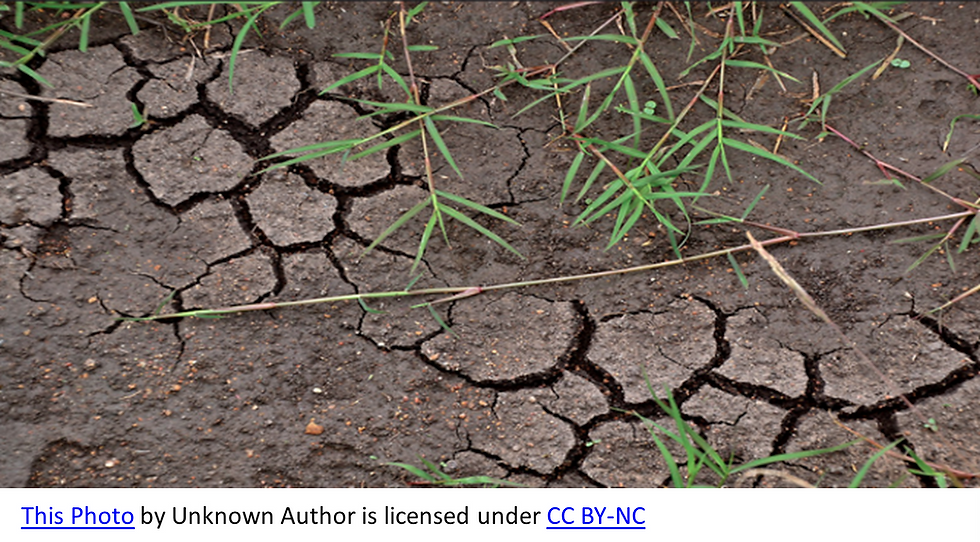CLIMATE CHANGE KNOWS NO BORDERS!
- Gael Britt
- Dec 7, 2022
- 3 min read
Updated: Dec 14, 2022
Research and science have given the world vast amounts of information regarding the cause, treatment, and prevention of most childhood diseases. With these profound medical developments now available to health-care professionals comes a broad understanding of the relationship between children’s health, and climate change. It has been determined by medical experts that the world’s children are, and will be the most vulnerable to the environmental issues we currently face.
As a global society facing a profound, and imminent ecological sustainability shift, social welfare programs must address the most vulnerable, our children.

The cost of pediatric health care amongst the challenged socio-economic poor children is growing exponentially. As the global world documents, and illustrates the dangers of climate change to life on earth, we are failing in our urgency to stabilize the living and learning environments of our children, especially the those living in urban centers, and rural locations.
There is an immediate need to save lives and preserve the fragile respiratory systems of the youngest victims of climate change. Medical data worldwide has shown a dramatic increase in asthma, especially in urban areas. The United States is among the leading countries attempting to tackle the toxic nitrogen dioxide emitted from motor vehicles using fossil fuels.[1] However, despite the millions of cases worldwide cited by the WHO (World Health Organization), and the concerted efforts currently being undertaken by some of the world’s major polluters, our children cannot wait. Pediatric chronic asthma affects 1 in 10 children in the United States.[2] Most children spend the majority (80%) of their time indoors, where they are exposed to airborne allergens, mold and contaminants.
On November 20th of this year, the United Nation Climate Change COP27 met and reached a agreement, to provide funding for what they framed as a “loss and damage” to countries whose citizens have experience catastrophe due to climate change.[3]
From a social welfare perspective, the usual-chronic diseases affecting children are rising at epidemic levels; respiratory illness, heat illnesses, water-related illnesses, insect and tick related diseases, have resulted in an immediate paradigm shift, with respect to subsistence welfare programs originally designed to save and improve the lives of children, not accounting for the destructive implications caused by climate change.[4]
With the dramatic ecological changes that planet Earth is undergoing, the nutritional guidelines for infants and children should reflect the unforeseen challenges we are experiencing as a result of global climate change. The socioeconomically poor children must receive priority and be protected against the plethora of diseases that can and often occur from the toxic environment that they live and breathe on a daily basis.
On a positive note, many cities in the United States have paired with local Farmer’s Markets to accept EBT, SNAP and other social assistance voucher programs, in order to provide healthy, nutritious fruits and vegetables, giving the poor viable affordable healthy food options.
As the impact of climate change becomes more apparent, and a real time reality for the urban and rural poor children of the world, food sustenance programs will need to become more proactive in the assortment and quality of the food and water that is available via welfare type allowances.
[1] "Urban Air Pollution Drives Millions of Cases of Asthma in Kids." N.p., n.d. Web. 22 Nov. 2022 <https://www.usnews.com/news/health-news/articles/2022-01-06/urban-air-pollution-drives-millions-of-cases-of-asthma-in-kids>.
[2] Gumy, S. and Mudu, P. (2018) “News on air pollution and health data and impacts on health from the World Health Organization,” Clean Air Journal [Preprint]. Available at: https://doi.org/10.17159/2410-972x/2018/v28n1a2. James, C. et al. (2019) “HEPA filtration improves asthma control in children exposed to traffic‐related airborne particles,” Indoor Air, 30(2), pp. 235–243. Available at: https://doi.org/10.1111/ina.12625. [3] "Sharm el-Sheikh Climate Change Conference - UNFCCC." N.p., n.d. Web. 27 Nov. 2022 <https://unfccc.int/cop27>. [4] "U.S. Environmental Protection Agency | US EPA." N.p., n.d. Web. 28 Nov. 2022 <https://www.epa.gov>.



Comments